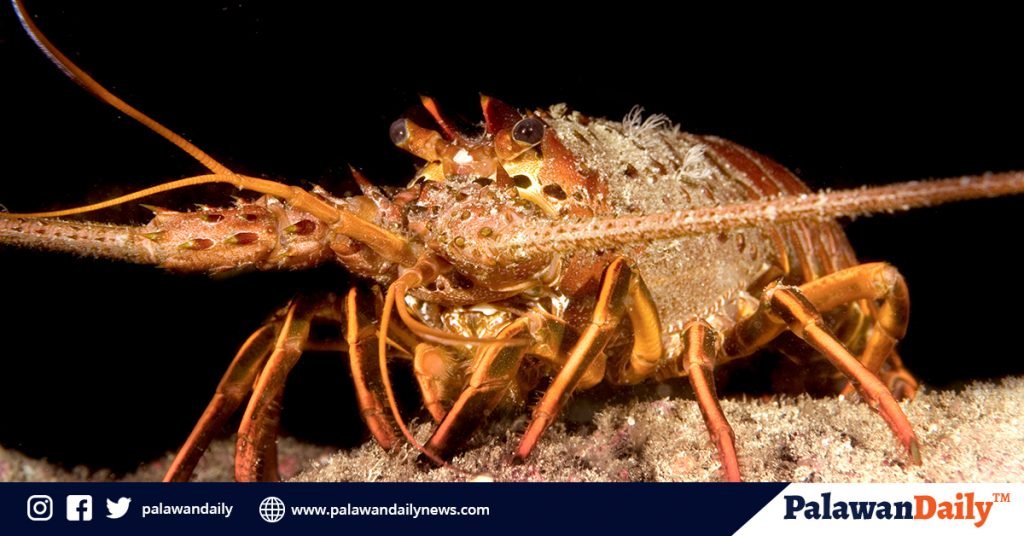The City Environment and Natural Resources Office of Puerto Princesa City through its Enforcement Division-Bantay Dagat section said that catchers of lobster fry and fingerlings has been installed by fishermen in the city’s coastal waters, despite its prohibition to protect our fishery resources.
In a report prepared by Admin Aide II Kate Aeriel Gaite and the head of Bantay Dagat section Luisito Garcia submitted to the City ENRO, Atty. Carlo B. Gomez said that in Barangay Mangingisda alone, specifically in Purok Puting Buhangin, they have discovered fry/ fingerling catchers owned by several individuals in Mangingisda and Luzviminda.
The lobster fry/fingerling catcher installed in the shallow portion of the coastal waters are tied in a wooden platform or tripods. These tripods are mostly made of coco lumber or round timber with estimated 3-4inches diameter, which poses threats to the city’s timber resources said Jessie Rublico head of the Bantay Gubat section of the City ENRO-Enforcement Division.
“May isang area na may 3,000 (lobster fry catcher) sa isang hilera. Ang ginamit nilang tripod ay coco lumber at ang iba round timber. Syempre puputol ‘yan ng mga kahoy,” Rublico said.
Aside from its threats to the natural environment for utilizing round timber, installing lobster fry catchers also cause damage to our coastal ecosystem.
Aside from Barangay Mangingisda, these lobster fry/fingerling catchers are also present in other coastal barangays of Inagawan, Inagawan-Sub, Kamuning in the South. The City ENRO Enforcement Division-Bantay Dagat section also monitored similar lobster fry traps in barangays Concepcion, Bacungan, and other coastal barangays in the northern part of the city.
The City ENRO Enforcement Division-Bantay Dagat section said that these lobster fingerlings/ catcher locally known as muhon were installed within our coastal waters and is operating without necessary permit. These lobster fry/ fingerlings are traded with local buyers, who reportedly sold it at a higher price to buyers coming from other countries.
The Department of Agriculture (DA) has issued the Fisheries Administrative Order (FAO) No. 265 last year, regulating the catching, possession, transporting, selling, trading and exporting of Puerulus, Juvenile and Gravid Spiny Lobsters (Palinuridae). The FAO was issued by DA Secretary William D. Dar and Commodore Eduardo B. Gongona, Undersecretary for Fisheries and Director of Bureau of Fisheries and Aquatic Resources (BFAR).
The prohibition includes the catching, transporting, possessing, trading and selling of gravid spiny lobster, and juvenile spiny lobsters from the wild measuring less than the maturity Carapace Length (CL). The lobsters are considered mature if they have reached 5.2 cm to 10.7 cm depending on the lobster’s species.
Also prohibited were the exportation of wildly-sourced puerulus of spiny lobsters and exportation of spiny lobster’s breeders, spawners, eggs or fry. Penalties ranges P 100,000 to P5 million and imprisonment from eight to 10 years.
The FAO said that lobster is among the most sought high-value commodity both in the local and international markets. The increasing demand has resulted in a high level of fishing pressure, which involves indiscriminate catching, selling and trading of the species resulting in the reduction of potential yield from the fishery and decrease in economic benefits obtained from the stock.
It was issued due to a significant drop in lobster production recorded from 71.88 metric tons in 2008 to 6.1 metric tons in 2016 where the areas of ARMM, Western Visayas, CARAGA, Bicol and Davao regions are the main producers.
“As aquaculture grow-out relies solely on wild-sourced fry/seed at present, the lobster industry recognizes the need for the BFAR, the National Fisheries Research and Development Institute, the academe, and other relevant institutions to initiate the development of the first hatchery and nursery technology” the FAO reads emphasizing the prospect to develop sustainable lobster aquaculture.
The collection of puerulus and juvenile spiny lobster is only allowed for research and academic purposes, or local aquaculture intended for grow-out purposes, provided the growers and collectors are registered/ licensed/ permitted and certified by the local government units (LGUs) concerned. The possession, transporting, selling and trading of hatchery or captive-bred lobster puerulus and fry are allowed only, once the hatchery technology for lobster has been established.
On October 29, 2020, the Palawan Council for Sustainable Development (PCSD) passed Resolution No. 20-750 adopting the DA-FAO No. 265 that likewise prohibits the catching, possession, transporting, selling, trading, and exporting of lobster fry and fingerlings in Palawan.
In its resolution, the PCSD said that the Republic Act 9147 also known as the Wildlife Resource Conservation and Protection Act mandates for the conservation of the country’s wildlife resources and their habitats for sustainability. It also mandates the PCSD to exercise jurisdiction in the province of Palawan as implementing agency over the terrestrial and aquatic wildlife species pursuant to the Strategic Environmental Plan (SEP) for Palawan also known as Republic Act 7166.
The PCSD also warned the public recently that a certain individual known as Paraka and Mirano were deceiving local residents in Roxas, Palawan by identifying themselves as employees of PCSD Executive Director Atty. Teodoro Jose Matta, so that they can easily buy lobster fry and fingerlings from the fishermen. The PCSD said that Paraka and Mirano bough lobster fry in Poblacion Roxas and in Barangay Caramay.

